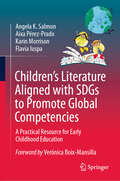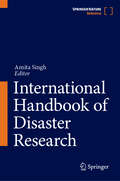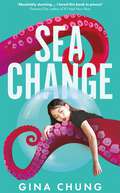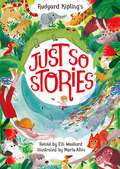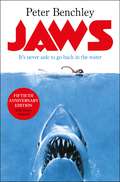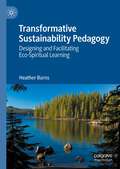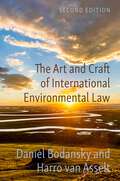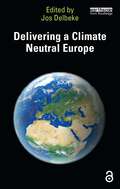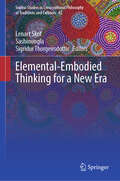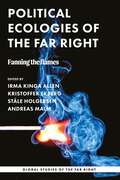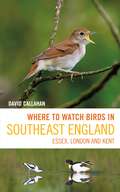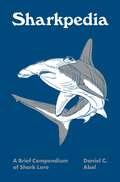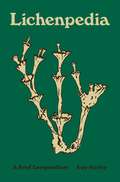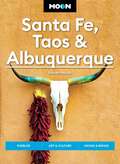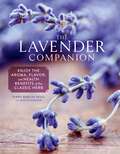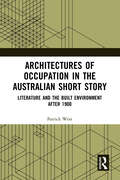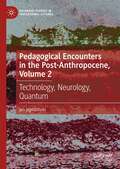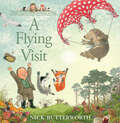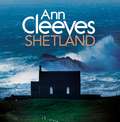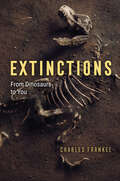- Table View
- List View
Children’s Literature Aligned with SDGs to Promote Global Competencies: A Practical Resource for Early Childhood Education
by Angela K. Salmon Aixa Pérez-Prado Karin Morrison Flavia IuspaThis book presents children’s literature as a platform for learning and helping young readers develop the knowledge, skills, and attitudes needed to thrive in an interconnected and diverse global society. It draws from various theoretical frameworks and research findings to implement critical literacy and culturally responsive teaching in the meaning-making process.The book focuses on global competencies and Sustainable Development Goals (SDGs) as intertwined concepts that work together to foster a more sustainable, inclusive, and equitable world. Developing global competencies empowers children and communities to actively participate in achieving the SDGs and addressing the pressing challenges of our time. The authors set high expectations on children as actors in transforming society. To facilitate this, the book offers an overview of child development theories as a foundation for designing developmentally appropriate practices to extend children’s books toward deep thinking and understanding. The book includes sample lessons that use cutting-edge research-based pedagogies and tools such as visible thinking routines and other approaches. Those lessons also help readers identify the Habits of Mind (HOM) children can develop by listening to and discussing stories. The HOM are attributes of good problem-finders and problem-solvers needed when confronting complex issues. The book provides resources and sample lessons that implement different thinking strategies to engage children in questioning and analyzing what they read, making them more critical. This is how children deeply understand the world and their role in creating positive change. The book aims to cultivate change-makers and global citizens through stories. It offers innovative approaches, including online learning options in accessible and engaging ways to help children think globally and act locally‘Through the power of children’s literature, this book serves a larger agenda: To build a more thoughtful world for future generations. By caring for and learning from one another through suggested activities in this book, they will share the riches and resources from across the world. As children learn about the promise of actions toward the UN Sustainable Goals, they can imagine living in an interdependent learning community where all people continually searching for ways to trust each other, learn together, and grow toward greater intelligence.’ Arthur Costa and Bena Kallick, Co-Founders and Directors of The Institute for Habits of Mind
Sea Change
by Gina ChungFor fans of Julia Armfield's Our Wives Under the Sea ‘Absolutely stunning . . . Full of longing, mystery, fear and hope. I loved this book to pieces!’ – Frances Cha, author of If I Had Your Face Ro is stuck. She’s just entered her thirties, she’s estranged from her mother, and her boyfriend has just left her to join a mission to Mars.Her days are spent dragging herself to her menial job at an aquarium, and her nights are spent drinking sharktinis (mountain dew and copious amounts of gin, plus a hint of jalapeno). With her best friend pulling away to focus on her upcoming wedding, Ro’s only companion is Dolores, a giant Pacific octopus who also happens to be Ro’s last remaining link to her father, a marine biologist who disappeared while on an expedition when Ro was a teenager.When Dolores is sold to a wealthy investor intent on moving her to a private aquarium, Ro finds herself on the precipice of self-destruction. Wading through memories of her youth, Ro has one last chance to come to terms with her childhood trauma, recommit to those around her, and find her place in an ever-changing world.‘Utterly original‘ – Bryan Washington, author of Memorial‘Sea Change stole my big weirdo heart‘ - Jean Kyoung Frazier, author of Pizza Girl
Rudyard Kipling's Just So Stories, retold by Elli Woollard: Book and CD Pack
by Elli WoollardDelightfully retold in humorous verse, with stunning illustrations throughout, this is a beautiful reworked edition of Rudyard Kipling's children's classic, Just So Stories. A gorgeous gift for imaginative young readers.In this highly illustrated collection meet the cat who walked by himself, discover how the lazy camel got his hump, how the elephant got his long trunk, find out why the rhino has such wrinkly skin and how the whale got his teeny tiny throat. These well known, richly imagined stories tell of how the world came to be as it is. This is a smart, funny and younger approach to Kipling's work, and Just So Stories as you've never seen them before. Rudyard Kipling's Just So Stories are one of the enduring classics of children's literature and these witty, inventive stories have delighted generations of children. Combining the brilliant rhyming talent of Elli Woollard and beautiful illustrations from the award-winning Marta Altés, Rudyard Kipling's Just So Stories is an enchanting retelling of a much-loved classic for a new generation. A book to truly treasure and one you will want to share.
Jaws: The iconic bestseller and Spielberg classic (Pan 70th Anniversary #13)
by Peter BenchleyPeter Benchley's Jaws first appeared in 1974. Alongside Steven Spielberg's film adaptation, the novel has sold over 20 million copies around the world, becoming a cult classic.It's never safe to go back in the water . . .It was just another day in the life of a small Atlantic resort until the terror from the deep came to prey on unwary holidaymakers. The first sign of trouble, a warning of what was to come, took the form of a young woman's body – or what was left of it – washed up on the long, white stretch of beach.A summer of terror has begun . . .'Pick up Jaws before midnight, read the first five pages, and I guarantee you'll be putting it down breathless and stunned, as dawn is breaking the next day.' - Daily Express
Transformative Sustainability Pedagogy: Designing and Facilitating Eco-Spiritual Learning
by Heather BurnsThis book offers stories and tools for designing and facilitating transformative sustainability pedagogy and explores how educators can intentionally design and facilitate eco-spiritual learning that promotes healing and wholeness. In these times of accelerating climate change and systemic injustice, we need learning spaces that both challenge our unsustainable dominant paradigms and support us in re-learning how to live in relational and regenerative ways. Rooted in the paradigm of interconnection and relationality, this book offers practical ways to design and facilitate learning toward more just, ecological, and spiritual ways of being. The author weaves together a variety of personal stories of teaching and learning, an exploration of how new science can be applied to transformative sustainability pedagogy, and eco-spiritual practices to help educators nurture wholeness and connection in themselves and in learning spaces.
The Art and Craft of International Environmental Law
by Daniel Bodansky Harro van AsseltIn countless ways we are affected by international environmental norms: some social, others legal; some quite general, others very specific. For example, the norms limiting the refrigerants used in air conditioners have been agreed upon in legal form internationally, and are mandated and enforced by national governments. The sustainable fishery and forestry standards used by Carrefour and Ikea were developed more informally by environmental groups and businesses, and are applied to producers through supply-chain contracts, without any government involvement. The reluctance to eat tuna fish or own elephant ivory reflects more general social norms, disseminated through education and culture. How and why do these norms arise? In what ways do they affect behavior? Do they change what states and individuals actually do and, if so, why? How effective are they in solving international environmental problems? In the second edition of The Art and Craft of International Environmental Law, Daniel Bodansky and Harro van Asselt explore these and other questions. Revisions cover the numerous developments spanning the 13 years since the first edition was published. New chapters address the growing role of environmental NGOs and the increasingly complex architecture of environmental law involving multiple institutions, levels of governance, and actors. Recent research has been incorporated on treaty design and policy implementation and effectiveness, and greater attention has been given to the role of the judiciary in standard-setting, implementation, and enforcement. A sophisticated yet highly readable introduction to how international environmental law works (and sometimes doesn't work), this book is essential reading for a wide audience.
Delivering a Climate Neutral Europe
by Jos DelbekeDelivering a Climate Neutral Europe summarises the achievements of 25 years of EU Climate Policy, with the emphasis on what has been achieved under the Green Deal. It also highlights climate issues on the table of policy makers in the next European policy cycle 2024–2029.Curated by Jos Delbeke, one of the foremost experts in this field, the chapters are all written by responsible officials of the EU Commission services, who were deeply involved in the negotiations related to the legislation they prepared. They explain how ambitious targets were prepared for 2030 and 2050 in view of implementing the commitments taken in 2015 under the Paris Agreement and present the overall architecture of the policy to counter the idea that an avalanche of legislative action is being developed without much structure. In particular, this book examines the carbon pricing tool that Europe implemented under the EU Emissions Trading System (EU ETS), the differentiated targets Member States have to deliver and climate-relevant EU legislation in the fields of energy, transport, industry, finance and agriculture and forestry. The authors also discuss the upcoming headwinds in the form of a growing scepticism in public opinion, and the impact of the wars in the close neighbourhood of the European continent.Written as a follow-up to previous publications EU Climate Policy Explained and Towards a Climate-Neutral Europe, this new volume will be a vital resource for students, scholars and policy makers alike who are researching and working in the areas of climate change, environmental governance and EU policy more broadly.
Elemental-Embodied Thinking for a New Era (Sophia Studies in Cross-cultural Philosophy of Traditions and Cultures #42)
by Lenart Škof Sigridur Thorgeirsdottir SashinunglaThis collection responds to widespread, complex, and current environmental challenges by presenting eleven original essays on a new elemental-embodied approach in environmental humanities. This approach has a special focus on elemental and indigenous philosophies as well as localized experiences of terrestrial forces: from earthquakes and eruptions to pandemics and natural disasters. Representing a shift in modern Western scientific and disembodied thinking of nature, this edited book approaches the question of relationality and intertwining of human and natural being by utilizing the elemental-embodied methodologies within philosophy of embodiment and nature. Supported by research in cognitive sciences, the contributors represent the experiential and affective turn within research into human cognition. As embodied, the human being is embedded and interacting with all there is. The aim of this edited volume is to indicate new paths toward regaining our access to natural being within usand thus toward reconnecting with the natural environment and the things and beings around us in a new, environmentally enhanced way. It appeals to researchers and students working in many fields, predominantly in philosophy, as well as religious and environmental studies.
Political ecologies of the far right: Fanning the flames (Global Studies of the Far Right)
by Andreas Malm Kristoffer Ekberg Irma Kinga Allen Ståle HolgersenThis volume engages with the alarming convergence of far right thinking and the ecological crisis in contemporary society. Growing out of the first international conference on political ecologies of the far right, the volume gathers crucial insights from authorities in the field as well as promising early career researchers. With cases ranging from ethnographical accounts of fossil fuel populist protest, historical analysis of the evangelical support for fossil fuels to interrogations of the settler colonial identities and material conditions defended by far right actors around the world, the book provides scholars, students and activists with ways to understand and counter these developments.
Political ecologies of the far right: Fanning the flames (Global Studies of the Far Right)
by Andreas Malm Kristoffer Ekberg Irma Kinga Allen Ståle HolgersenThis volume engages with the alarming convergence of far right thinking and the ecological crisis in contemporary society. Growing out of the first international conference on political ecologies of the far right, the volume gathers crucial insights from authorities in the field as well as promising early career researchers. With cases ranging from ethnographical accounts of fossil fuel populist protest, historical analysis of the evangelical support for fossil fuels to interrogations of the settler colonial identities and material conditions defended by far right actors around the world, the book provides scholars, students and activists with ways to understand and counter these developments.
Where to Watch Birds in Southeast England: Essex, London and Kent (Where to Watch Birds)
by David CallahanThe definitive site guide to a surprisingly bird-rich corner of England – Kent, Essex and the Greater London area.From the deep forests of Kent to the low-lying mudflats, beaches and saltmarshes of the Greater Thames Estuary, this ecologically rich area of England attracts vast numbers of wildfowl and waders. The region boasts many internationally and nationally important reserves including Rainham Marshes and Cliffe Pools, while Dungeness in Kent is one of Britain's best known birding hotspots for vagrant species such as Penduline Tit and Kentish Plover. London itself contains numerous birdwatching sites including Barnes and Woodberry Wetlands, along with some of the best spots in Britain for scarcities such as Lesser Spotted Woodpecker and Black Redstart. From Marsh Harrier and Firecrest to Curlew and Lapwing, there is plenty for birdwatchers to enjoy while exploring the parks, wetlands, woodlands and coast of southeast England. Written by life-long birdwatcher David Callahan, this is the definitive guide to the birding highlights of the region. It contains a comprehensive review of all the major sites and many lesser-known ones, with maps, notes on access, and information on target species and when to visit. Where to Watch Birds in Southeast England is indispensable for any birder exploring the region, or anyone in London wanting to head out to the countryside and enjoy a slice of our rich avian heritage.
Where to Watch Birds in Southeast England: Essex, London and Kent (Where to Watch Birds)
by David CallahanThe definitive site guide to a surprisingly bird-rich corner of England – Kent, Essex and the Greater London area.From the deep forests of Kent to the low-lying mudflats, beaches and saltmarshes of the Greater Thames Estuary, this ecologically rich area of England attracts vast numbers of wildfowl and waders. The region boasts many internationally and nationally important reserves including Rainham Marshes and Cliffe Pools, while Dungeness in Kent is one of Britain's best known birding hotspots for vagrant species such as Penduline Tit and Kentish Plover. London itself contains numerous birdwatching sites including Barnes and Woodberry Wetlands, along with some of the best spots in Britain for scarcities such as Lesser Spotted Woodpecker and Black Redstart. From Marsh Harrier and Firecrest to Curlew and Lapwing, there is plenty for birdwatchers to enjoy while exploring the parks, wetlands, woodlands and coast of southeast England. Written by life-long birdwatcher David Callahan, this is the definitive guide to the birding highlights of the region. It contains a comprehensive review of all the major sites and many lesser-known ones, with maps, notes on access, and information on target species and when to visit. Where to Watch Birds in Southeast England is indispensable for any birder exploring the region, or anyone in London wanting to head out to the countryside and enjoy a slice of our rich avian heritage.
Sharkpedia: A Brief Compendium of Shark Lore (Pedia Bks. #13)
by Daniel AbelA fun, pocket-size A–Z treasury about sharks, featuring fascinating, little-known facts and captivating illustrationsSharkpedia is an entertaining and enlightening celebration of sharks featuring close to 100 entries, based on the latest knowledge and enriched by original illustrations. Avoiding tired factoids, shark authority Daniel Abel gives new bite to essential information about sharks, including their adaptations as top predators, 450-million-year evolution, behavioral complexity, ecological importance, existential threats, and often sensationalized appearances in popular culture, from Jaws to Shark Week.The notion that sharks are insatiable killing machines is a toothless myth—yet the fear of shark attacks still holds on to many people like a set of locked jaws. Sharkpedia reveals that sharks are much less to be feared—and much more interesting, complicated, and important—than many realize. Filled with compelling stories, Sharkpedia debunks shark myths (for example, that sharks are large and coastal when in fact most are small and inhabit the deep sea), describes their lives (where and how long they live, how many offspring they have, what they eat, and how their bodies function), introduces a variety of iconic and obscure species (such as the Happy Eddie Shyshark), explores our love/hate relationship with sharks, and much more.With charming drawings by leading shark artist Marc Dando, Sharkpedia is a scientific and cultural treasure trove that will leave you with new insights about these remarkable animals. Dive in!Features a cloth cover with an elaborate foil-stamped design
Sharkpedia: A Brief Compendium of Shark Lore (Pedia Bks. #13)
by Daniel AbelA fun, pocket-size A–Z treasury about sharks, featuring fascinating, little-known facts and captivating illustrationsSharkpedia is an entertaining and enlightening celebration of sharks featuring close to 100 entries, based on the latest knowledge and enriched by original illustrations. Avoiding tired factoids, shark authority Daniel Abel gives new bite to essential information about sharks, including their adaptations as top predators, 450-million-year evolution, behavioral complexity, ecological importance, existential threats, and often sensationalized appearances in popular culture, from Jaws to Shark Week.The notion that sharks are insatiable killing machines is a toothless myth—yet the fear of shark attacks still holds on to many people like a set of locked jaws. Sharkpedia reveals that sharks are much less to be feared—and much more interesting, complicated, and important—than many realize. Filled with compelling stories, Sharkpedia debunks shark myths (for example, that sharks are large and coastal when in fact most are small and inhabit the deep sea), describes their lives (where and how long they live, how many offspring they have, what they eat, and how their bodies function), introduces a variety of iconic and obscure species (such as the Happy Eddie Shyshark), explores our love/hate relationship with sharks, and much more.With charming drawings by leading shark artist Marc Dando, Sharkpedia is a scientific and cultural treasure trove that will leave you with new insights about these remarkable animals. Dive in!Features a cloth cover with an elaborate foil-stamped design
Lichenpedia: A Brief Compendium (Pedia Books #11)
by Kay HurleyAn illustrated mini-encyclopedia about the weird and wonderful world of lichensLichenpedia is a delightfully entertaining and beautifully illustrated A–Z treasury about the strange, obscure, and remarkable world of lichens, from their unique and essential roles in nature and the ways they are used in dyeing, brewing, and drug-making to how they have inspired writers and artists, from Henry David Thoreau to modern painters.In 100 brief entries written in a vivid, lively style, Kay Hurley introduces key aspects of lichen biology, environmental roles, emerging uses, scientific history, and myth. She describes the variety of forms that lichens take, from leafy to filamentous to things reminiscent of skin diseases, with imaginative names like witch&’s hair. She explains the surprising ways that birds and beasts—from reindeer and moose down to tiny tardigrades—use lichens, and how lichens survive in extreme environments, from deserts to Antarctica to outer space. Hurley also introduces some of the innovators who have advanced the knowledge of lichens, from the ancient Greek philosopher Theophrastus to today&’s professional lichenologists.With charming drawings by Susan Adele Edwards, Lichenpedia promises to put you in touch with the natural world in a new way by opening your eyes to these vital organisms, which are all around us, hidden in plain sight.Features a cloth cover with an elaborate foil-stamped design
Lichenpedia: A Brief Compendium (Pedia Books #11)
by Kay HurleyAn illustrated mini-encyclopedia about the weird and wonderful world of lichensLichenpedia is a delightfully entertaining and beautifully illustrated A–Z treasury about the strange, obscure, and remarkable world of lichens, from their unique and essential roles in nature and the ways they are used in dyeing, brewing, and drug-making to how they have inspired writers and artists, from Henry David Thoreau to modern painters.In 100 brief entries written in a vivid, lively style, Kay Hurley introduces key aspects of lichen biology, environmental roles, emerging uses, scientific history, and myth. She describes the variety of forms that lichens take, from leafy to filamentous to things reminiscent of skin diseases, with imaginative names like witch&’s hair. She explains the surprising ways that birds and beasts—from reindeer and moose down to tiny tardigrades—use lichens, and how lichens survive in extreme environments, from deserts to Antarctica to outer space. Hurley also introduces some of the innovators who have advanced the knowledge of lichens, from the ancient Greek philosopher Theophrastus to today&’s professional lichenologists.With charming drawings by Susan Adele Edwards, Lichenpedia promises to put you in touch with the natural world in a new way by opening your eyes to these vital organisms, which are all around us, hidden in plain sight.Features a cloth cover with an elaborate foil-stamped design
Moon Santa Fe, Taos & Albuquerque: Pueblos, Art & Culture, Hiking & Biking (Moon U.S. Travel Guide)
by Steven Horak Moon Travel GuidesExplore the eccentric art installations, historic adobe pueblos, and rugged high desert trails of the Land of Enchantment with Moon Santa Fe, Taos & Albuquerque. Inside you'll find:Flexible itineraries for art-lovers, outdoors enthusiasts, and more, including weekend getaways and a six-day road trip to see all three cities Outdoor adventures: Race down the slopes of Taos Ski Valley or mountain bike through stands of piñon and juniper near Santa Fe. Hike through thick alpine forests, raft the wild rapids of the Rio Grande Gorge, or marvel at the best view in New Mexico from a hot air balloon. Wander around the archeological sites and cave apartments of Bandelier National Monument, spot elk in Valles Caldera National Preserve, or trek alongside ancient rock carvings at Petroglyph National Monument Top experiences and unique activities: Mingle with local artists in the vibrant galleries of Santa Fe, visit Georgia O'Keefe's studio at Ghost Ranch, and relax at a world-class spa. Observe a traditional dance ceremony at a pueblo, admire handmade art and jewelry at the Santa Fe Indian Market, and learn about Native American history at one of the region's many cultural museums. Take a scenic ride on a historic steam-driven train or glide above Albuquerque on the longest aerial tram in the Americas Tastes of the Southwest: Dive into traditional New Mexican dishes drenched in spicy red and green chile sauces or indulge in a juicy green chile cheeseburger. Sip on a sunset margarita at a mellow open-air bar or taste local spirits in a trendy cocktail lounge. Take a culinary tour of Santa Fe's growing food truck scene or explore Albuquerque's lively beer culture Expert insight from Santa Fe local Steven Horak Vibrant full-color photos and detailed maps throughoutHelpful background information on the landscape, wildlife, climate, and local culture With Moon Santa Fe, Taos & Albuquerque's practical tips and local insight, you can experience New Mexico your way. Exploring more of the Southwest? Try Moon Phoenix, Scottsdale & Sedona or Moon Southwest Road Trip. Hitting the parks? Try Moon Grand Canyon or Moon Zion & Bryce.About Moon Travel Guides: Moon was founded in 1973 to empower independent, active, and conscious travel. We prioritize local businesses, outdoor recreation, and traveling strategically and sustainably. Moon Travel Guides are written by local, expert authors with great stories to tell—and they can't wait to share their favorite places with you. For more inspiration, follow @moonguides on social media.
The Lavender Companion: Enjoy the Aroma, Flavor, and Health Benefits of This Classic Herb
by Jessica Dunham Terry Barlin VesciA celebration of lavender featuring stunning photographs; favorite recipes for the kitchen, pantry, and body care products; along with fascinating lore and gardening guidance from a destination lavender farm. Lavender has long been a favorite herb with its amazing, resinous fragrance; calming qualities; and unique flavor for seasoning food. This lavishly photographed celebration of the beloved herb, written by an acclaimed lavender farmer and cooking instructor, is brimming over with inspiration and ideas for bringing the fragrance and flavor of lavender into daily life. The book profiles the most popular lavender varieties and their recommended uses, along with the history, lore, and traditional medicinal uses. More than 40 recipes showcase lavender in delicious dishes from the kitchen as well homemade craft and body products. Tips for success with lavender in the garden complete this perfect gift for every lavender lover.
Architectures of Occupation in the Australian Short Story: Literature and the Built Environment after 1900
by Patrick WestPatrick West’s Architectures of Occupation in the Australian Short Story cultivates the potential for literary representations of architectural space to contribute to the development of a contemporary politics of Australian post-colonialism.West argues that the predominance of tropes of place within cultural and critical expressions of Australian post-colonialism should be re-balanced through attention to spatial strategies of anti-colonial power. To elaborate the raw material of such strategies, West develops interdisciplinary close readings of keynote stories within three female-authored, pan-twentieth century, Australian short-story collections: Bush Studies by Barbara Baynton (1902); Kiss on the Lips and Other Stories by Katharine Susannah Prichard (1932); and White Turtle: A Collection of Short Stories by Merlinda Bobis (1999). The capacity of the short-story form to prompt creative and politically germinal engagements with species of space associated with architecture and buildings is underscored. Relatedly, West argues that the recent resurgence of binary thought—on local, national, and international scales—occasions an approach to the short-story collections shaped by binary relationships like a dichotomy of inside and outside. Concluding his argument, West connects the literary and architectural critiques of the story collections to the wicked problem, linked to ongoing colonial violences, of improving Australian Indigenous housing outcomes.Innovative and interdisciplinary, this book will be of interest to scholars and students of Literary, Architectural, and Postcolonial Studies. .
Architectures of Occupation in the Australian Short Story: Literature and the Built Environment after 1900
by Patrick WestPatrick West’s Architectures of Occupation in the Australian Short Story cultivates the potential for literary representations of architectural space to contribute to the development of a contemporary politics of Australian post-colonialism.West argues that the predominance of tropes of place within cultural and critical expressions of Australian post-colonialism should be re-balanced through attention to spatial strategies of anti-colonial power. To elaborate the raw material of such strategies, West develops interdisciplinary close readings of keynote stories within three female-authored, pan-twentieth century, Australian short-story collections: Bush Studies by Barbara Baynton (1902); Kiss on the Lips and Other Stories by Katharine Susannah Prichard (1932); and White Turtle: A Collection of Short Stories by Merlinda Bobis (1999). The capacity of the short-story form to prompt creative and politically germinal engagements with species of space associated with architecture and buildings is underscored. Relatedly, West argues that the recent resurgence of binary thought—on local, national, and international scales—occasions an approach to the short-story collections shaped by binary relationships like a dichotomy of inside and outside. Concluding his argument, West connects the literary and architectural critiques of the story collections to the wicked problem, linked to ongoing colonial violences, of improving Australian Indigenous housing outcomes.Innovative and interdisciplinary, this book will be of interest to scholars and students of Literary, Architectural, and Postcolonial Studies. .
Pedagogical Encounters in the Post-Anthropocene, Volume 2: Technology, Neurology, Quantum (Palgrave Studies in Educational Futures)
by jan jagodzinskiAs a follow up to Pedagogical Encounters in the Post-Anthropocene, Volume I, this book addresses three major areas in response to the post-Anthropocene: Technology, Neurology, Quantum. Each of these areas is broadly addressed in relation to the concerns that have arisen both theoretically and educationally. As in Volume I, the author terms these to be encounters as each area presents a particular problematic when addressing the phase change that the planet is undergoing where the anthropogenic labour of global humanity is contributing to climate change, endangering our very existence. Technology in education has been a significant development. There is a concerted effort to review this development placing stress on the rise of learning machines and algorithms. In the second encounter the vast literature on neurology is addressed, especially neurodiversity and the various symptoms that have emerged in the post-Anthropocene era. The last section reviews issues related to quantum theory as this is fundamental to tensions between physics and metaphysics. The volume concludes with the author’s own pedagogical proposal for the future.
A Flying Visit (A Percy the Park Keeper Story)
by Nick ButterworthAn exciting picture book about much-loved Percy the Park Keeper and his animal friends from the bestselling creator of One Snowy Night.
Shetland: A Shetland Mystery (Shetland Ser. #7)
by Ann CleevesIn this gloriously illustrated companion to her crime novels featuring Inspector Jimmy Perez, Ann Cleeves takes readers through a year on Shetland. Discover its past, meet its people, celebrate its festivals and see how the flora and fauna of the islands change with the seasons.An archipelago of more than a hundred islands, Shetland is the one of the most remote places in the United Kingdom. Its fifteen hundred miles of shore mean that wherever one stands, there is a view of the sea. It has sheltered voes and beaches and dramatically exposed cliffs, lush meadows full of wild flowers in the summer and bleak hilltops where only the hardiest of plants will grow. It is a place where traditions are valued and celebrated, but new technologies and ways of working are also embraced. Whether it is the drama of the Viking fire festival of Up Helly Aa in winter, or the piercing blue and hot pink of spring flowers on the clifftops, the long, white nights of midsummer or the fierce gales and high tides of autumn, Shetland is vividly captured in all its bleak and special beauty.A book to treasure, full of photos and insightful notes about the stunning location of the Shetland series, now a major BBC One drama starring Douglas Henshall.
Extinctions: From Dinosaurs to You
by Charles FrankelA compelling answer to an important question: Can past mass extinctions teach us how to avoid future planetary disaster? On its face, the story of mass extinction on Earth is one of unavoidable disaster. Asteroid smashes into planet; goodbye dinosaurs. Planetwide crises seem to be beyond our ability to affect or evade. Extinctions argues that geological history tells an instructive story, one that offers important signs for us to consider. When the asteroid struck, Charles Frankel explains, it set off a wave of cataclysms that wore away at the global ecosystem until it all fell apart. What if there had been a way to slow or even turn back these tides? Frankel believes that the answer to this question holds the key to human survival. Human history, from the massacre of Ice Age megafauna to today’s industrial climate change, has brought the planet through another series of cataclysmic events. But the history of mass extinction together with the latest climate research, Frankel maintains, shows us a way out. If we curb our destructive habits, particularly our drive to kill and consume other species, and work instead to conserve what biodiversity remains, the Earth might yet recover. Rather than await decisive disaster, Frankel argues that we must instead take action to reimagine what it means to be human. As he eloquently explains, geological history reminds us that life is not eternal; we can disappear, or we can become something new and continue our evolutionary adventure.
